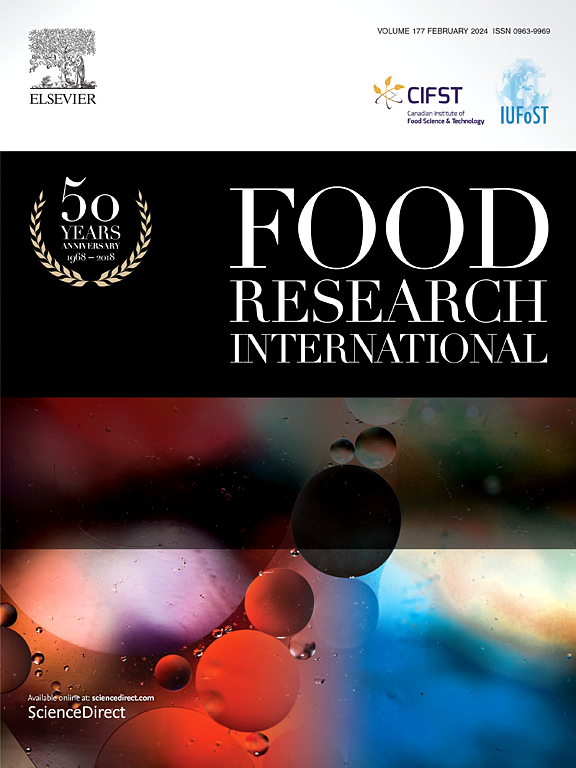Effects of orange variety on the physiochemical properties of self-secretory extracellular vesicle and its application potential as nutrient-rich beverage
IF 7
1区 农林科学
Q1 FOOD SCIENCE & TECHNOLOGY
引用次数: 0
Abstract
Plant-derived extracellular vesicles have presented great potential in drug and/or nutrition delivery, but it is still unclear whether the variety affects the physicochemical properties of plant derived extracellular vesicles. In this work, the extracellular vesicles from various oranges were first characterized, including navel orange juice (NOJ), green orange juice (GOJ), bingtang orange juice (BTOJ) and blood orange juice (BOJ). The results exhibited obvious distinctions of extracellular vesicles among different oranges, such as vesicle concentration, surface potential, lipid composition, protein content and so on. Furthermore, the polyphenol-loaded orange beverages were successfully prepared via incorporating polyphenols into the orange-derived extracellular vesicles in an amorphous form. Taking curcumin (Cur) as an example, extracellular vesicles could confer it with the higher solubility, stability and bioaccessibility after encapsulation. Conclusively, the extracellular vesicles in NOJ exhibited more satisfactory results for curcumin delivery than those in the other three orange juices. In particular, one-step prepared polyphenol-rich orange beverages have higher antioxidant ability than blank orange beverages regardless of the influence of fruit variety. This suggests that using extracellular vesicle as natural nanocarrier is a feasible method for constructing the full plant-based functional food. Additionally, the current study will provide a meaningful information for the selection of plant-derived extracellular vesicle in the future research.

柑桔品种对自分泌胞外囊泡理化性质的影响及其作为富营养饮料的应用潜力
植物源性细胞外囊泡在药物和/或营养传递方面具有很大的潜力,但其种类是否会影响植物源性细胞外囊泡的理化性质尚不清楚。本文首次对脐橙汁(NOJ)、青橙汁(GOJ)、冰塘橙汁(BTOJ)和血橙汁(BOJ)等多种橙子的细胞外囊泡进行了表征。结果表明,不同品种橘子的胞外囊泡在浓度、表面电位、脂质组成、蛋白质含量等方面存在明显差异。此外,通过将多酚以无定形形式掺入橙子衍生的细胞外囊泡中,成功制备了负载多酚的橙子饮料。以姜黄素(Cur)为例,细胞外囊泡包封后具有较高的溶解度、稳定性和生物可及性。最后,与其他三种橙汁相比,NOJ的细胞外囊泡表现出更令人满意的姜黄素递送效果。特别是一步法制备的富含多酚的橙饮料,在不受水果品种影响的情况下,其抗氧化能力高于空白橙饮料。这表明利用细胞外囊泡作为天然纳米载体是构建全植物性功能食品的可行方法。此外,本研究将为今后植物源性细胞外囊泡的选择提供有意义的信息。
本文章由计算机程序翻译,如有差异,请以英文原文为准。
求助全文
约1分钟内获得全文
求助全文
来源期刊

Food Research International
工程技术-食品科技
CiteScore
12.50
自引率
7.40%
发文量
1183
审稿时长
79 days
期刊介绍:
Food Research International serves as a rapid dissemination platform for significant and impactful research in food science, technology, engineering, and nutrition. The journal focuses on publishing novel, high-quality, and high-impact review papers, original research papers, and letters to the editors across various disciplines in the science and technology of food. Additionally, it follows a policy of publishing special issues on topical and emergent subjects in food research or related areas. Selected, peer-reviewed papers from scientific meetings, workshops, and conferences on the science, technology, and engineering of foods are also featured in special issues.
 求助内容:
求助内容: 应助结果提醒方式:
应助结果提醒方式:


